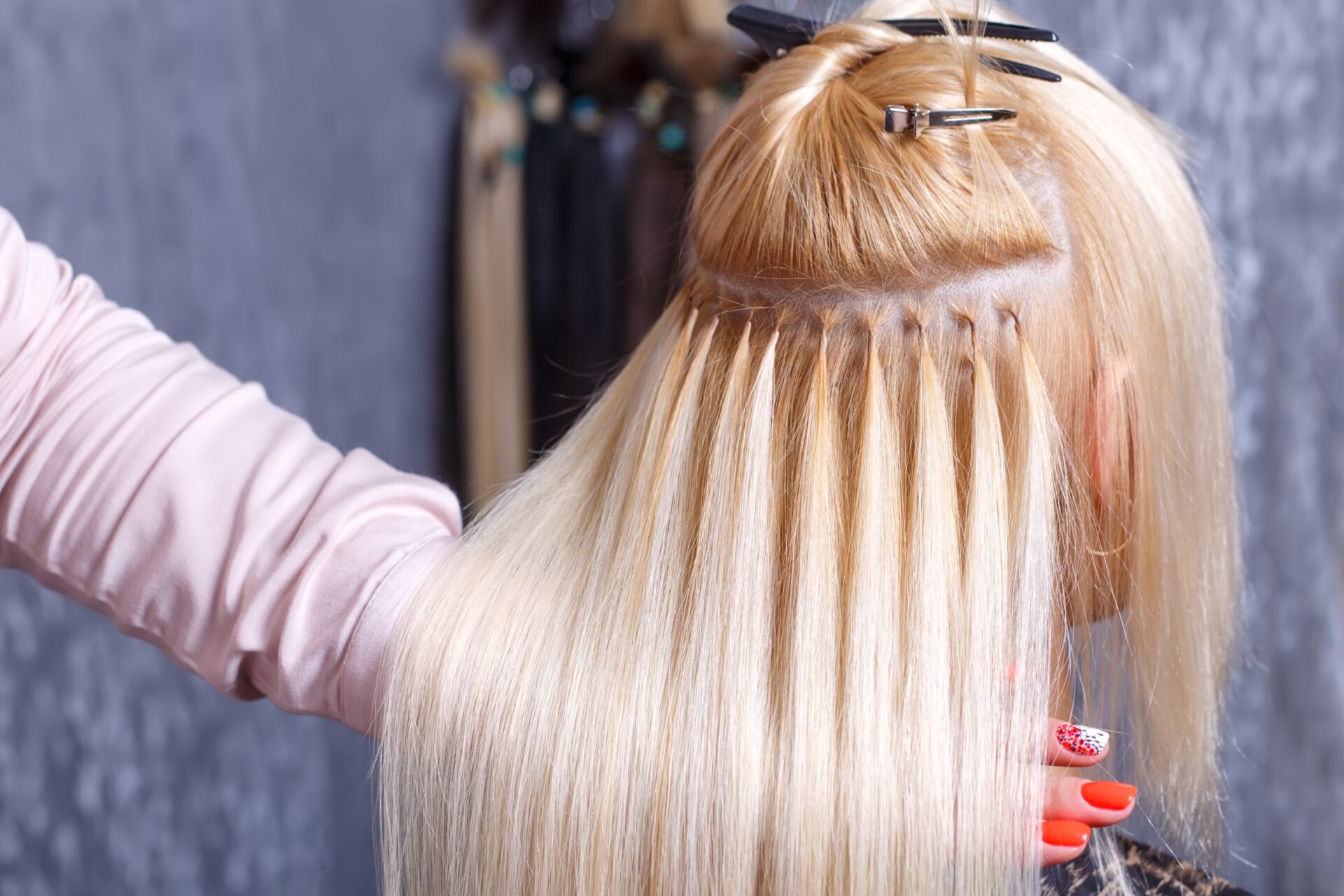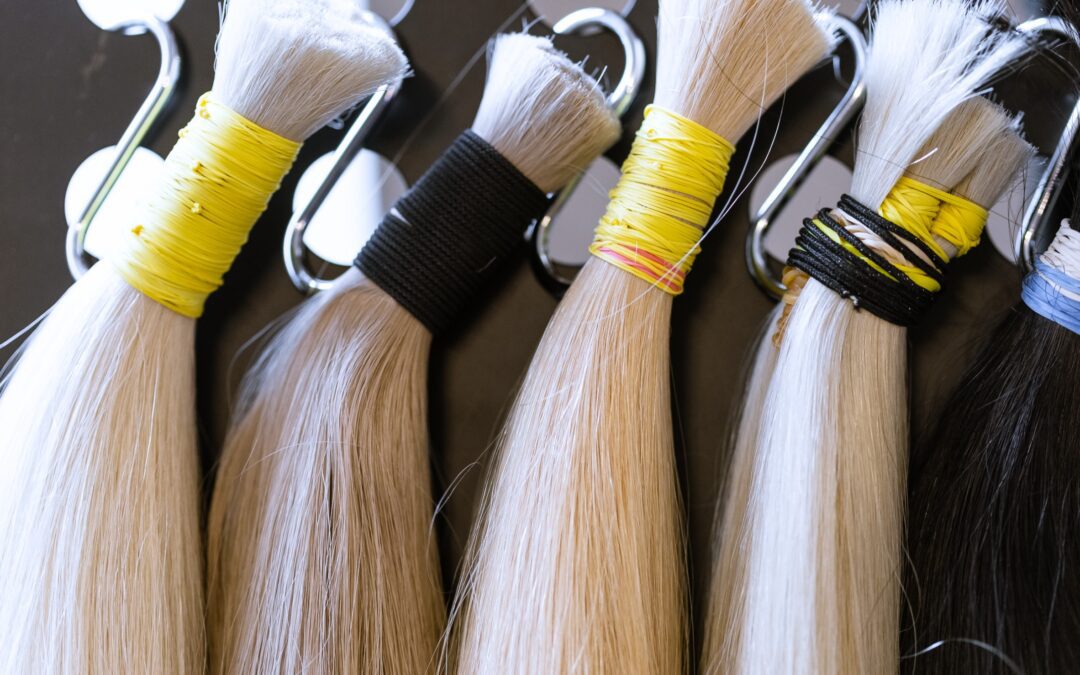Hair extensions are a versatile and transformative beauty tool, enabling you to experiment with different lengths, volumes, and styles. Despite their growing popularity, many misconceptions about hair extensions persist, causing hesitation and confusion among potential users.
Read on as we debunk some of the most common myths about hair extensions so you can move forward with accurate information when choosing whether or not to try extensions for yourself.
What Are Hair Extensions?
Before diving into the truths about extensions, it’s important to understand what hair extensions are and the different types available. Understanding hair extensions involves recognizing the variety of options available and their diverse applications. They can be made from synthetic or human hair and come in several types. Each type serves different purposes and suits various lifestyles and hair types. They can enhance length, volume, and texture, offering a versatile solution if you want to temporarily or permanently transform your hairstyle.
Types of Hair Extensions
There are different types of hair extensions, including the following:
- Clip-Ins:These are the most temporary type, perfect for special occasions or days when you want an extra boost. They can be easily applied and removed at home without professional assistance. Because you don’t wear them continuously, they require minimal maintenance compared to other extensions.
- Tape-Ins:These extensions are more semi-permanent and involve adhesive wefts taped to your natural hair. They typically last 6-8 weeks before needing reapplication. They are lightweight and lie flat against the head, making them a popular choice for a natural look.
- Sew-Ins (Weaves):Sew-ins involve braiding the natural hair and sewing hair wefts into the braids. This method is often used for thicker hair types and can last up to 8 weeks. Sew-ins require a professional application and regular maintenance to ensure the natural hair remains healthy.
- Fusion/Bonded Extensions:These are attached to natural hair using a keratin bond. With proper care, they can last up to six months and are known for their natural look and feel. However, they require a time-intensive application process, and you should have a professional maintain them to avoid damage.
- Micro-Link Extensions:Also known as micro-bead extensions, these involve attaching small wefts of hair to the natural hair using tiny beads. They are adjustable, and you can tighten them as your natural hair grows. Micro-link extensions are versatile and allow for much movement, but they also require regular maintenance to ensure the beads do not slip or cause tangling.
What Are Some Common Misconceptions about Hair Extensions?
Common misconceptions about hair extensions cloud reality and often stem from outdated information. It is important to debunk them to learn the truth about hair extensions.
As such, let’s look at a few of the most common misconceptions:
They Damage Natural Hair

This misconception often arises from improper application or poor-quality products. When properly installed and maintained, hair extensions should not damage natural hair. The key to avoiding damage lies in professional application and diligent maintenance. Skilled stylists securely attach extensions without putting excessive strain on the natural hair. Regular maintenance appointments allow adjustments and ensure that the extensions and natural hair remain in good condition.
They Look Unnatural
While poorly matched or low-quality extensions can look artificial, advancements in hair extension technology have enabled a seamless and natural look. Modern hair extension techniques, such as hand-tied wefts and custom color matching, allow for a more natural blend with your hair. High-quality extensions made from human hair also provide a realistic texture and appearance, making it nearly impossible to distinguish extensions from natural hair.
They Are High Maintenance
There is a belief that hair extensions require excessive time and effort to maintain. While hair extensions require some care, they are not necessarily high maintenance. The maintenance routine for hair extensions varies depending on the type. For example, you must remove clip-ins daily, while tape-ins and sew-ins require less frequent attention. Regular brushing, gentle washing, and using sulfate-free products help keep extensions looking their best without a significant time investment. Professional touch-ups and check-ins also ensure the longevity and quality of the extensions.
They Can Only Give Length
Though you may feel that hair extensions are solely for adding length, they are incredibly versatile and can add volume and texture as well, enhancing different hairstyles. Extensions can create a fuller appearance for those with thin hair, add highlights or color without chemical treatments, and allow for various styles that might not be possible with natural hair alone. They can also provide the volume needed for intricate updos and other elaborate styles.
They Only Suit Certain Hair Types
You may think hair extensions only suit specific hair textures or types. This myth can discourage those of you with certain hair types from exploring extensions. Hair extensions, however, come in various forms and can be customized to suit different hair textures and types. Whether you have straight, wavy, curly, or coily hair, there are extension methods and products designed to blend seamlessly with your natural hair. Professional stylists can recommend the best extensions based on your hair type and desired outcome.
They Are a Long-Term Commitment
There is a misconception that getting hair extensions means committing to them for an extended period of time. This belief can make you hesitant to try extensions, fearing you will be stuck with them indefinitely. Many hair extension methods actually offer flexibility and can be temporary. Clip-in extensions, for example, can be worn for a special occasion and removed afterward. You can take out even semi-permanent options like tape-ins and micro-links when desired. This allows you to enjoy the benefits of hair extensions without feeling locked into a long-term commitment.
Professional Consultation and Care
To ensure the best results and maintain the health of your natural hair, consult with a professional stylist. A skilled stylist can recommend the best extensions for your hair type and lifestyle, ensuring a natural and comfortable fit. When choosing a salon for hair extensions, look for experienced professionals with positive reviews and a portfolio of their work.
A good consultation should involve discussing your hair goals, examining your natural hair, and determining the best extension method. Follow your stylist’s recommendations for washing, brushing, and styling. The right products and techniques will help keep your natural hair and extensions in optimal condition.
Our professionals at Kate’s Kuts can help you choose the best hair extensions that fit your needs and budget. Contact us to book an appointment!


